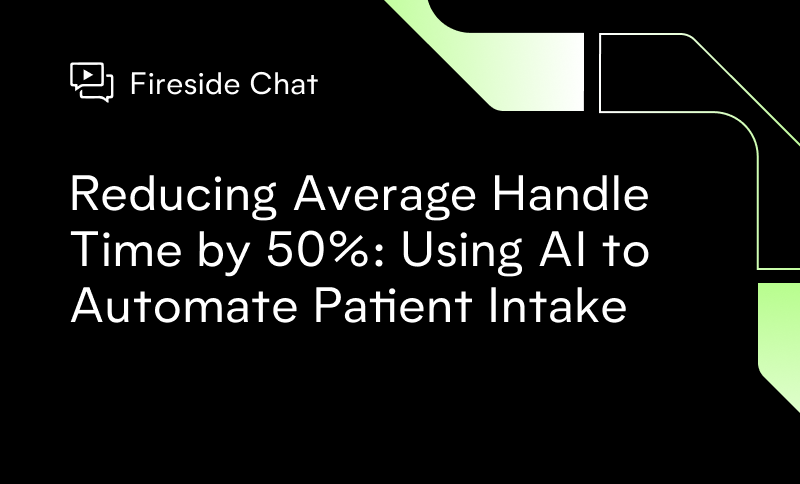Earlier this month, we discussed some of the most common, though under-discussed, pitfalls contact centers experience when attempting to build their own conversational AI automation in-house.
They included low effectiveness, poor design, unreachable analytics, and poor redundancy. But there’s even more to consider before embarking on a long, arduous build process.
Conversational AI is rapidly advancing every day, and the following unforeseen costs of building focus on features that make it compatible with more platforms, channels, languages, and compliance orders.
Here they are:
Incomplete integrations
Integrations play a key role in the effectiveness of conversational AI automation, both for the customer and agent. Your CRM integrations should allow conversational AI to automatically create tasks or tickets, update customer records, and provide intelligent call summary notes for follow-up or agent escalations.
Effective integrations should also allow your solution to resolve customer issues end-to-end without human assistance, like issuing refunds, initiating order updates, and changing account information while on the phone with customers.
The Cost: Without seamless integrations, conversational AI won’t be able to communicate with your CRM to authenticate callers, greet your customers by name, and offer the most accurate and relevant resolution based on historical interactions.
The Replicant Difference: Replicant’s conversational AI automation comes standard with out of the box integrations to every CRM, call center software, and telephony provider. It can also be custom integrated to proprietary CRM systems or data lakes to retrieve customer information quickly and accurately.
Lack of omnichannel and multi-language capabilities
Conversational AI automation can also fall short without the properly built omni-channel and multi-language capabilities. More and more, customer service is taking place across multiple channels, and the ability to switch seamlessly between them with the same conversational AI is imperative.
If you’re building conversational AI in-house, ensure it can process requests across SMS, VIVR, and chat and, on top of that, handle tough conversations in any language. The latter can require experts in linguistics and dialects to ensure not only every language is covered, but the colloquialisms associated with different regions.
The Cost: When planning an in-house build, understand that these capabilities can require additional in-house AI engineers to manage every channel and multi-language conversation designs – both a time and resource cost.
The Replicant Difference: Replicant’s conversational AI uses a single brain that supports multi-channel voice, chat, SMS, meaning your automation is always on-brand and always effective no matter what channel it’s using. It also supports hundreds of languages and dialects so nothing gets lost in translation.
Poor security and compliance
It goes without saying that incomplete security and compliance protocols can cost an in-house conversational AI build greatly. Be sure you’re aware of the requirements of building a high availability infrastructure that runs 24/7 with efficient load balancing across thousands of concurrent calls so that you can scale effortlessly and securely.
Your platform should also be fully compliant with current data protection regulations at the state and federal level, and have the HIPAA and PCI compliance in place to collect payments and protect customer information.
The Cost: Without proper compliance, your conversational AI may not be able to automate payment flows or collect sensitive customer information, meaning live agents will still be called on to escalate these requests. From a cybersecurity standpoint, poor compliance can lead to devastating data breaches.
The Replicant Difference: Replicant customers leverage features that give them the control to customize how their data is accessed, used, and retained. Replicant’s platform security standards satisfy industry-specific regulations as well as state, federal, and international regulatory requirements for data privacy and protection, including HIPAA, SOC 2, PCI, and GDPR compliance.
Static improvement
If you’re thinking about building your own conversational AI for contact center automation, make sure you have the engineers and development hours available to build and maintain your models well beyond deployment.
Your conversational AI should be able to extract multiple intents and a full and accurate transcription from every conversation, and get better at doing so over time. Customers change fast, and conversational AI should quickly and automatically adapt to new forms of speech, as well as new ways of responding to non-binary questions.
The Cost: A full conversational AI build should include an easy to manage testing rig that provides both automatic testing and A/B testing for long-term improvement. Without these features, your investment may find itself dated within years as conversational AI improves.
The Replicant Difference: A continuous learning platform that measures and enhances performance over time (>96% inference accuracy) and an enterprise-grade software platform which will constantly improve with regular releases of new features and improvements to resilience, performance, and scale.
 First Notice of Loss
First Notice of Loss 



